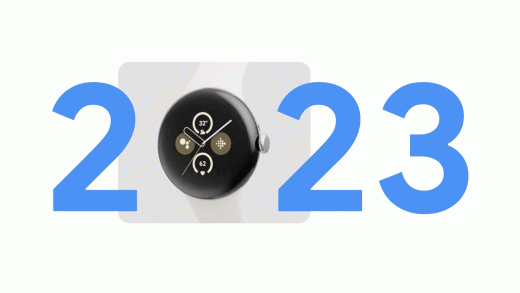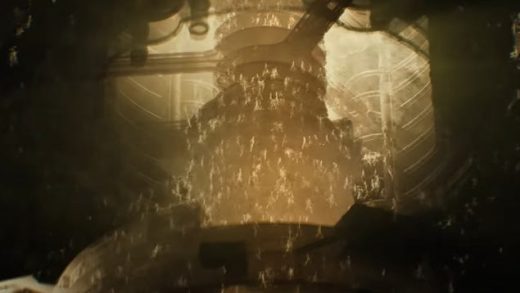Two years after The Witcher‘s second season made a magical, monstrous upgrade to the series, Season 3 plunges fans right back into the turmoil of the Continent, where the powerful Princess Ciri of Cintra (Freya Allan) is being relentlessly hunted by…everyone?
Released as two volumes and with showrunner Lauren Schmidt Hissrich back at the helm, The Witcher‘s third season sends our heroes Ciri, Geralt of Rivia (Henry Cavill), and Yennefer of Vengerberg (Anya Charlotra) on the run. Over eight episodes, the show severely ups the gruesome monster game, delivers those complex politics and way more magic, and lets Ciri kick some serious ass while developing her potentially world-saving/world-ending magic. Throw in two season-stealing episodes (one entirely set at the Met Gala of the Continent, and one entirely following Ciri through what feels like a bad acid trip in the Korath desert), and parallels to the most popular Witcher game, and you’re in for a treat on Cavill’s last ride.
The Witcher Season 3 explores a new family dynamic

Credit: Susie Allnutt / Netflix
Season 3 picks up with Geralt, Yennefer, and Ciri on the run from the whole damn Continent, not to mention a herd of terrifying interdimensional enemies — don’t take the series’ strangely tame opening scene and its bumbling group of “hunters” as the real level of threat here. As the trio move from remote cottage to remote cottage, the season’s’ first episode has real Deathly Hallows forest-wandering energy, and it’s just as strained, as Yennefer endures unsubtle shunning for almost sacrificing Ciri to the Deathless Mother last season. Oh, she knows what she did.
As Geralt, Yennefer, and Ciri navigate their awkward new family dynamic through some unashamedly cheesy montages in Vol. 2 — the giggling tea towel flicking, I can’t — those feelings of betrayal and estrangement soften to those of unity and love (read: she’s allowed back in the main house). But by the end of Vol. 2, the trio has legitimately become family.
How does Henry Cavill finish up as Geralt in ‘The Witcher’?
Chalotra’s Yennefer finally regains her power in multiple ways this season, having spent the last two in varying states of pain, distress, and incapacitation. Friends, it’s about time. She reestablishes her identity as a savvy political negotiator, maternal and magical guide for Ciri, and big time sorcerer alongside her mighty mentor Tissaia de Vries (MyAnna Buring), while trying to make amends with her beloved Geralt. Netflix’s The Witcher series foregrounded Ciri and Yennefer as leads alongside Geralt from the beginning, and Season 3 solidifies this, moving both sorceresses into higher positions of influence and purpose than ever.
Cavill, in his last ride as Geralt, takes a grunting, sword-swinging victory lap with the role he’s been fine-tuning for three seasons. With his character now as well-worn as his silver wig and leather armor, Cavill’s Geralt is at his best both when he’s careening through action sequences or when he’s resignedly forced into traps, political conversations, dance sequences (you heard me), or Jaskier’s humor attempts. Finally becoming the father he avoided being for Ciri, Geralt’s paternal protectiveness remains steadfast this season, and there’s a light delve into his own family history. However, his invincibility as a warrior is tested, which gives Cavill plenty to work with for his final run.

Credit: Susan Allnutt/Netflix
With a Tim Minchin-style makeover, Joey Batey’s Jaskier is more jaded and dramatic than ever, playing more politics and developing a lusty connection with the hedonistic Redanian Prince Radovid (an extremely welcome addition in Hugh Skinner). This season, Jaskier is still the show’s comic relief but he’s also man of romantic pursuits, dubbed “The Lothario of Lyria, The Romancer of Redania, The Stud of Cidaris”. The bard’s now requisite singalongs are designated elsewhere this season, with Jaskier’s biggest songs instead being emotionally vulnerable ballads — there’s no butcher burning or coin tossing until the end credits.
But the real star of the show this season? Freya Allan’s Ciri.
Ciri kicks ass in Season 3

Credit: Susie Allnutt / Netflix
Having grown up over the last two seasons — from the terrified, petulant teen princess we saw in Season 1 to the junior witcher of Season 2 — Allan moves Ciri into young maturity, toward her destiny as the heir of the Cintran throne and potentially the most powerful sorcerer on the Continent. Ciri explores her sense of justice as a future leader, wanting to “offer something different, a way forward that doesn’t divide, but unites,” as she tells Geralt and Yennefer, “to be the balance between kings and mages, and to align the Continent, instead of constantly pitting parts against each other.”
Simultaneously a sage idealist and an angsty adolescent under Yennefer’s tutelage, Ciri still plays some level of the “mewling brat” she declares she isn’t — and Allan balances these elements perfectly. Chalotra and Allan spend Season 3, Vol. 1 navigating the pair’s rocky, pseudo-mother/teen daughter relationshi; Yen actually drops an “I’m not angry, I’m disappointed” at her protege at one point, and Ciri pulls a classic running away stunt. But in Vol. 2, Ciri is forced to develop her skills alone, with one of the season’s standout episodes, episode 7, almost solely following Ciri’s struggle through the Korath desert, through surreal visions, a friendly unicorn, desert-dwelling monsters, and foreboding presences.

Credit: Jay Maidment
Importantly, Ciri gets to kick serious ass this time around, as Allan’s stuntwork in Season 3 is nothing short of gravity-defying. Putting her training at Kaer Morhen from Season 2 to good use, Ciri fights by fist and sword almost as much as Geralt does this season, slowly becoming the monster hunter she desperately wants to be, with even more deadpan quips than her witcher dad.
The Witcher Season 3 sees a Continent divided (so keep up)
Like Seasons 1 and 2, The Witcher Season 3 doesn’t spell out the lore for viewers, instead requiring you to keep up with the various kingdoms, rulers, factions, and alliances through heated council conversations or idle chatter at the pub. In fact, I’d heartily recommend hitting up a recap as character connections and context could soar past you — or alternately, watching the episodes with subtitles greatly helped me keep up with it all.
‘The Witcher’ Season 3’s weapons are full of hidden clues
(In case you don’t even have time for that, here’s your TL;DR recap: Ciri has Elder Blood so everyone wants to either kill or use her, Yennefer got her powers back after the Deathless Mother possessed her, Ciri left open a portal to another dimension with a group of ghostly horsemen promising the end of the world, Ciri’s dad is very much alive and actually the Emperor of the southern Nilfgaardian Empire, and Geralt is still Geralting.)
After ironing out that confusing timeline business, Season 3’s narrative structure is the easiest yet to follow — and still, it’s not a breeze. Don’t stress too much, though. Season 3 crams in a colossal amount of disparate narratives that eventually intertwine and make sense. It’s all loosely based on Andrzej Sapkowski’s Time of Contempt, the second book in the Witcher saga; Season 2 was based on the first book Blood of Elves, and the first season on his short stories.

Credit: Susie Allnutt
It’s a time of “rogue mages and power-hungry monarchs” this season, as Geralt describes it. The northern kingdoms of the Continent remain in a state of high tension as word of the Elder Blood princess travels, and mages struggle to keep kings in check while Yennefer attempts to unite them. Within the lavish courts of Nilfgaard and Redania, there’s Game of Thrones-worthy treasonous power plays, grisly palace presents, the ol’ classic blackmail, and conniving advisors. Meanwhile, the Nilfgaardians play a much bigger role, building strength for an invasion as the Emperor Emhyr var Emreis (Bart Edwards) — aka The White Flame and Ciri’s very much alive father (the big reveal from Season 2’s finale) — continues to abuse the trust of his Elven allies, led by their vengeful queen Francesca Findabair (Mecia Simson). Fallen Nilfgaardian court sorceress Fringilla Vigo (Mimi Ndiweni) rebuilds her standing through shrewd moves. Redania’s insufferable King Vizimir (a perfectly puerile Ed Birch) feasts and pontificates while his devious spymaster Sigismund Dijkstra (Graham McTavish) and strong court mage Philippa Eilhart (Cassie Clare) covertly plot moves.
Rogue mage Rience (Chris Fulton) and the question of his real boss and their goal remains the biggest mystery for our protagonists to solve, all of which is revealed by the end of Vol. 1. With the real villain exposed, Vol. 2 focuses on the fate of Aretuza and the Brotherhood of Sorcerers as their enemies close in around them. It’s constantly a lot but for fans of fantasy who love the lore it’s a real treat.
Season 3 teases the big bad villains but keeps them political for now

Credit: Susie Allnutt / Netflix
Across Vol. 1 and 2, Season 3 deliberately keeps you in the dark over who exactly the biggest bad is — which can be slightly hard to keep a handle on at times. Magegate pervades the third series, connecting both volumes with the season’s cleverest episode set entirely at an opulent sorcerer’s ball dripping in costume designer Lucinda Wright’s incredible creations and edited from multiple perspectives and timeframes. The connections between political power players are revealed, meaning devastating consequences for some of our favourites — and one hell of a performance from MyAnna Buring as Tissaia.
‘The Witcher’ Season 3’s ball costumes are packed with hidden clues
Meanwhile, Emhyr toils over his big Continental domination plans while doing little else than being mean to his allies. Reunited with long lost Nilfgaardian knight Cahir (Eamon Farren), Emhyr spends most of the season ordering people about from his lofty throne room to find Ciri (join the club, dude).
Briefly, Season 3 teases an even larger threat apparent, with the much-anticipated, but ultimately fleeting arrival of the Wild Hunt. Teased in the finale of Season 2, the Wild Hunt are the villainous group of skeletal corpses on horses, an apocalyptic foe that finally promises to elevate The Witcher to the world-ending stakes it deserves. The Wild Hunt’s biggest moment in Vol. 1 is a scene that more than references The Fellowship of the Ring‘s chase through the trees with Arwen, Frodo, and the Nazgul. But it’s pretty much all we get this season, as The Wild Hunt don’t show up again.
Luckily, while we’re dreading more action from this flying V of doom…
…The Witcher Season 3 ups the monster game
If you thought the dinosaur-like monsters who crawled through the portal at Kaer Morhen in Season 2 were something, buckle up. Repeating the series’ long established monster-of-the-week format, Season 3’s monsters range from winged Witcher favourites to one of the most messed-up creatures you’ll see on screen this year — I won’t spoil it but think Avatar: The Last Airbender‘s Koh the Face Stealer but worse. Monsters chase our heroes through dark festival mazes, emerge from dark castle dungeons, and try to inhale our heroes in the desert, meaning we get plenty of killer action sequences with Geralt and Ciri in full flight.
Let’s talk about that nightmare fuel monster from ‘The Witcher’ Season 3
Each battle scene in The Witcher, with or without monsters, is meticulously choreographed by stunt and cinematography, with whooshing, uninterrupted, 360 degree sequences following Cavill pulverizing countless assailants with that beloved sword. It’s been like this since the first ever episode, and it’s only getting bigger and better. Magic use is also up during these sequences, especially with Yennefer and Geralt, meaning all of this monster and magic mayhem made this fan of The Witcher games especially tickled.
Fans of The Witcher 3 game will love Season 3
Though the series is an adaptation of Sapkowski’s second book Time of Contempt, the third season of The Witcher feels closer than ever to the most popular video game in the franchise: 2015’s The Witcher 3: Wild Hunt. Through the arrival of the Wild Hunt itself, the expansion of political parrying to Nilfgaard, and through specific costuming — Ciri’s outfits in particular feel more like her game character’s — the series is creeping slowly toward familiar territory for those introduced to the Witcher series through the games instead of the books. There’s even some hilariously overt bath inclusions in scenes between Yennefer and Geralt, which gamers might appreciate. Whether the show will continue these nods for the fourth season remains to be seen, but with the Wild Hunt at Ciri’s heels, even if for a moment, it’s looking good. There’s even a passing reference to a certain Baron in the final episode.
The Witcher Season 3 is an immense political and magical story cleverly woven through eight episodes, with the actors appearing well settled in their roles — a quality that could prove troublesome now Cavill has left the series. But the battles are bloody, the lore heavy, the court drama grisly, and the monsters gruesome. It’s The Witcher, alright.
How to watch: The Witcher is now streaming on Netflix.
UPDATE: Jul. 27, 2023, 10:48 a.m. UTC Mashable’s review of ‘The Witcher’ Season 3 initially ran with the release of the first volume on June 29. It’s been updated to reflect the whole season, including Vol. 2.











